
Fireworks, champagne, and making wishes – this is how most of us welcome the new year. How are residents of other countries celebrating New Year’s Eve? In some places, on the last night of the year, strictly defined, traditional dishes are eaten with their special symbolism. Learn about the New Year’s Eve customs of other countries in the world. Maybe this year you will have the opportunity to spend New Year’s Eve and New Year in one of them?
The Polish New Year’s Eve tradition does not include many culinary customs – most of this type of tradition is associated with Christmas Eve and holidays. So, it is even more worth getting interested in the customs established in other countries and learning about previously unknown rituals.
Bluefin tuna for good luck in Japan

The biggest culinary attraction for the Japanese on New Year’s Eve is blue tuna, one of the most expensive fish in the world. This dish cannot be missing on the tables of the wealthier people of Japan. Nevertheless, the cost of the dish is not as important as its hue. The color of the meat is important – although the tuna is called blue, its meat is pink. For the Japanese people, this color symbolizes happiness.
12 grapes in Spain
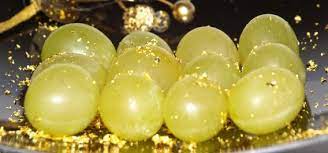
Eating a dozen grapes, one during each stroke of midnight, is a Spanish New Year’s tradition. If you don’t manage to eat all the grapes then that will bring bad luck. The taste of the grapes is also an omen of fortune, with a sweet one predicting a good one and a sour a less-than-good one.
Rosca de Reyes in Mexico
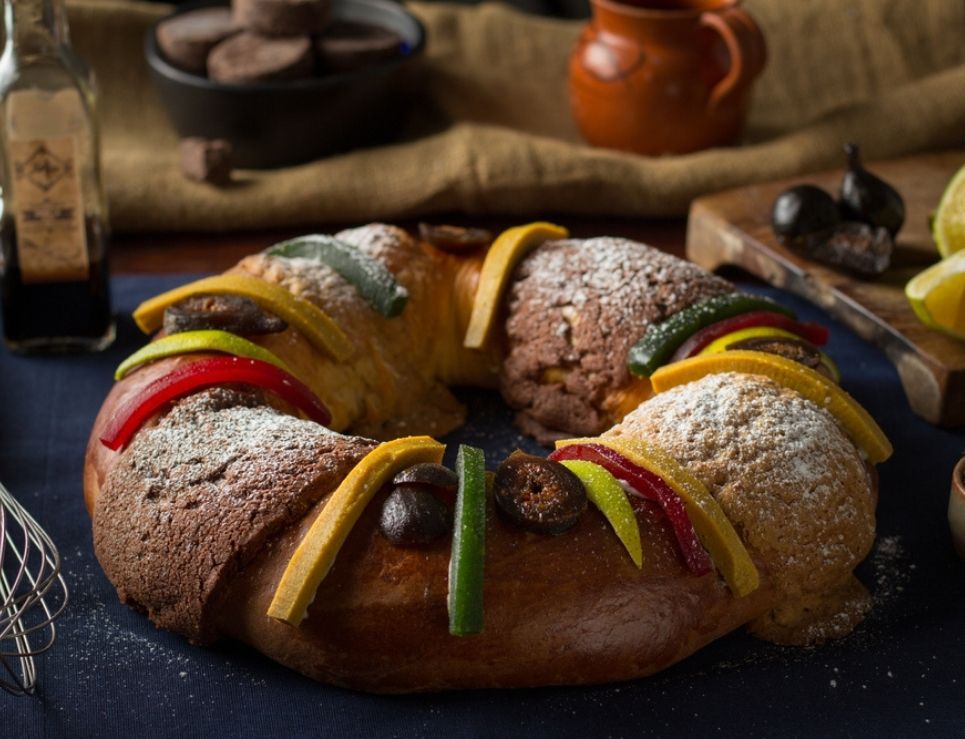
Eaten on January 6 to celebrate the Epiphany (when the three wise men arrived to meet the baby Jesus), this ring-shaped enriched bread is decorated with fruit, nuts, and sugar. A miniature model of baby Jesus is placed inside the cake before baking and the lucky person who discovers the charm in their slice is considered blessed.
Tteokguk in South Korea
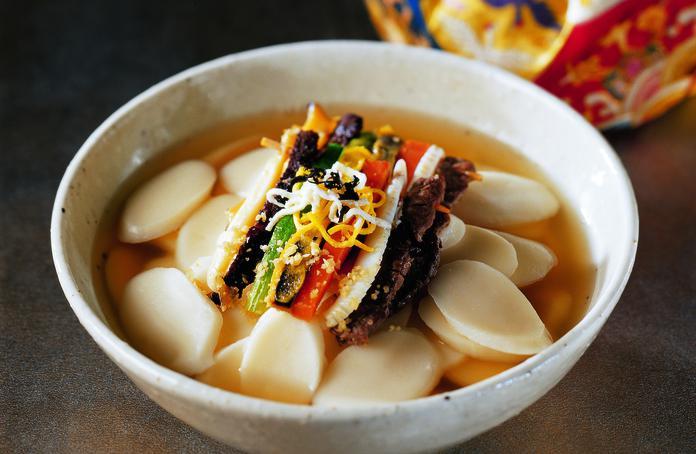
This soup is so fundamental to South Korean New Year (Seollal, February 16) that without eating it you can’t be considered to be one year older. Korean people consider themselves to grow older at New Year’s rather than on their birthday. You can even discover how old a Korean person is by asking them how many tteokguk they have eaten. Made of broth, small disc-shaped rice cakes, meat, and vegetables, tteokguk is believed to give diners good luck for the year ahead. And it’s delicious, too, being topped with eggs, roasted seaweed, and spring onions and full of delicious, chewy rice cakes.
Raw egg in El Salvador
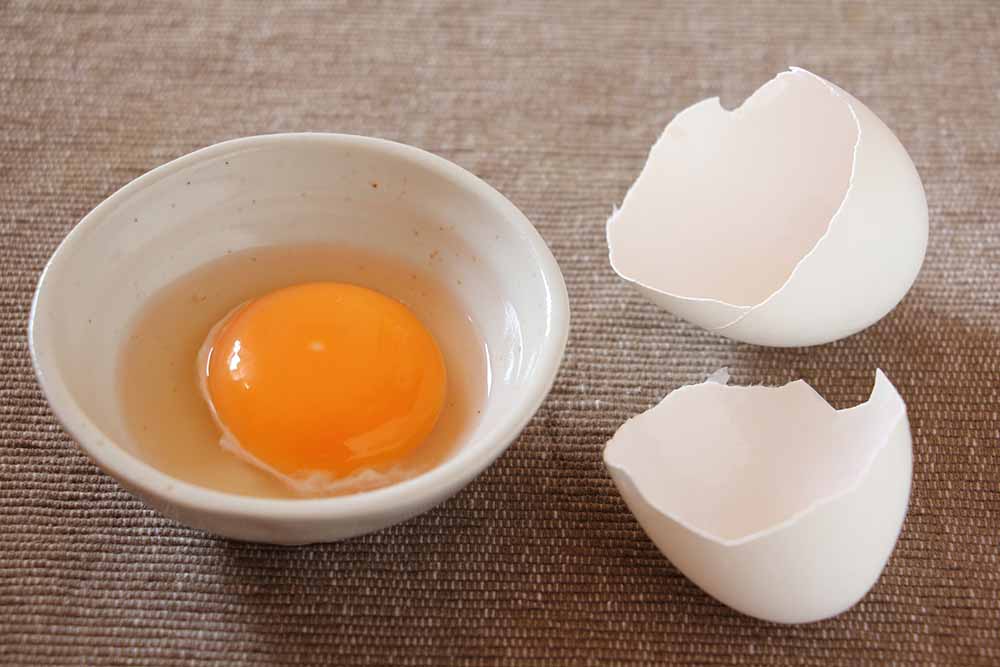
You’ll be delighted to know that you don’t have to eat this raw egg. Instead, you have to crack it into a glass of water a minute before midnight. The following morning everyone decides what their yolk looks like, and the answer will represent what the near year will bring.
Cotechino in Italy
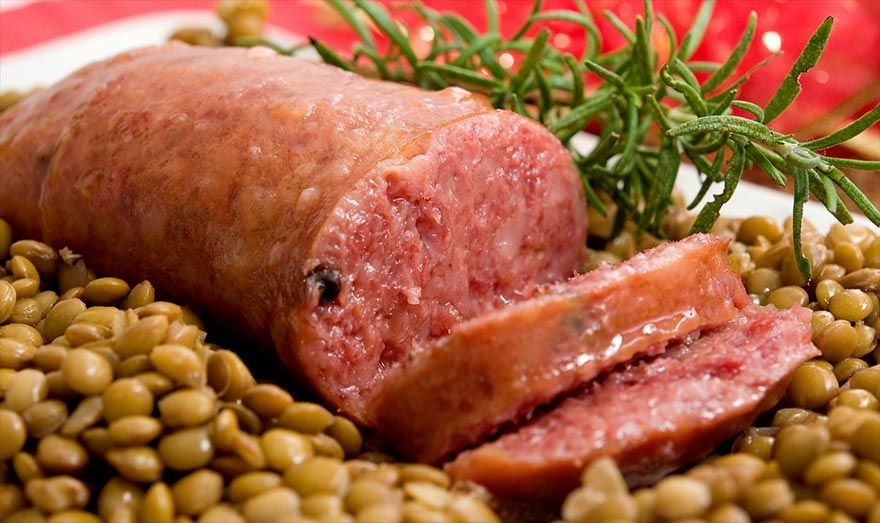
On New Year’s Day, Italians feast on the traditional dish of “cotechino e lenticchie”, which is savory pork sausage containing “lo zampone”, or the hoof of the pig, and paired with lentils. The hoof is considered to be a symbol of abundance and lentils are believed to bring good luck and prosperity in the new year. With their coin-like shape, lentils are thought to bring prosperity for the year ahead when eaten on New Year’s Day. They’re frequently served with cotechino, a pork sausage, which has fatty and rich qualities that also symbolize future prosperity.
Pomegranate in Turkey

In Turkey, people smash this delicious sweet and sour red fruit onto their doorways on New Year’s. The more seeds that burst out, the more good fortune you will obtain. The seeds symbolize fertility and abundance for the coming year.
Black-eyed peas, greens, pork, and cornbread in Southern US
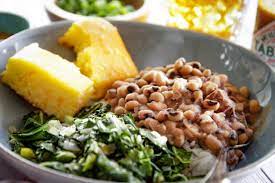
Beans or peas represent pennies, cooked greens such as collard or mustard greens represent folded money ( color green ), and pork represents general prosperity as pigs root forward when searching for food through the earth. Cornbread also represents wealth due to its golden color. It is a winning combination.
Pork or sugar pigs in Germany
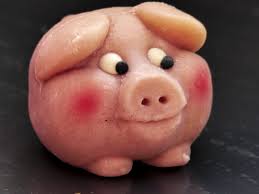
Carrying on the theme of pigs equating money in Germany – except in this country, you don’t have to eat pork to receive the luck. Instead, you can munch on a delicious “glücksschwein” or a tiny, cute pig made from Marzipan (sugary almond paste). The sweetness of these piggies guarantees an extra sweet New Year.
Whisky in Scotland

Lastly, something to toast the new year with. To celebrate “Hogmanay”(the Scottish word for New Year’s Eve celebrations), the first person to cross the threshold of your house is supposed to bring gifts symbolizing good luck for the coming year. Scottish whisky will bring a merry year ahead, the spiced fruit cake Black Bun ensures that you’ll have food enough to prosper, and lump coal represents warmth and fuel for the new year. The gifts are meant to be carried by a tall, dark, and handsome man for a truly auspicious start to the year.
Lucky seven in Brazil
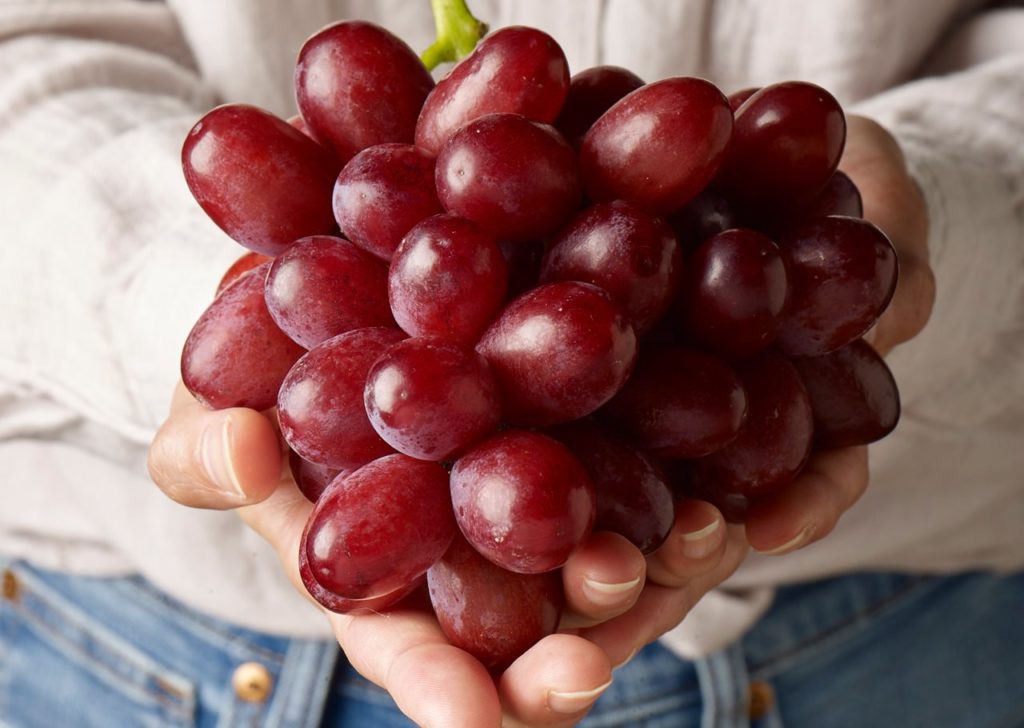
Brazilians have a slightly different grape-eating New Year’s Eve custom, along with a few others. They do everything in lucky sevens: At midnight it’s tradition to jump in seven waves while making seven wishes. They also eat seven grapes to symbolize abundance and seven pomegranate seeds for prosperity. Head to Rio de Janeiro for the biggest firework show in South America. Many Brazilians also adhere to the Lucky 7 rituals: eat 7 grapes for abundance, chew 7 pomegranate seeds for prosperity, or jump over 7 waves, making a wish on each wave.
Tangyuan in China
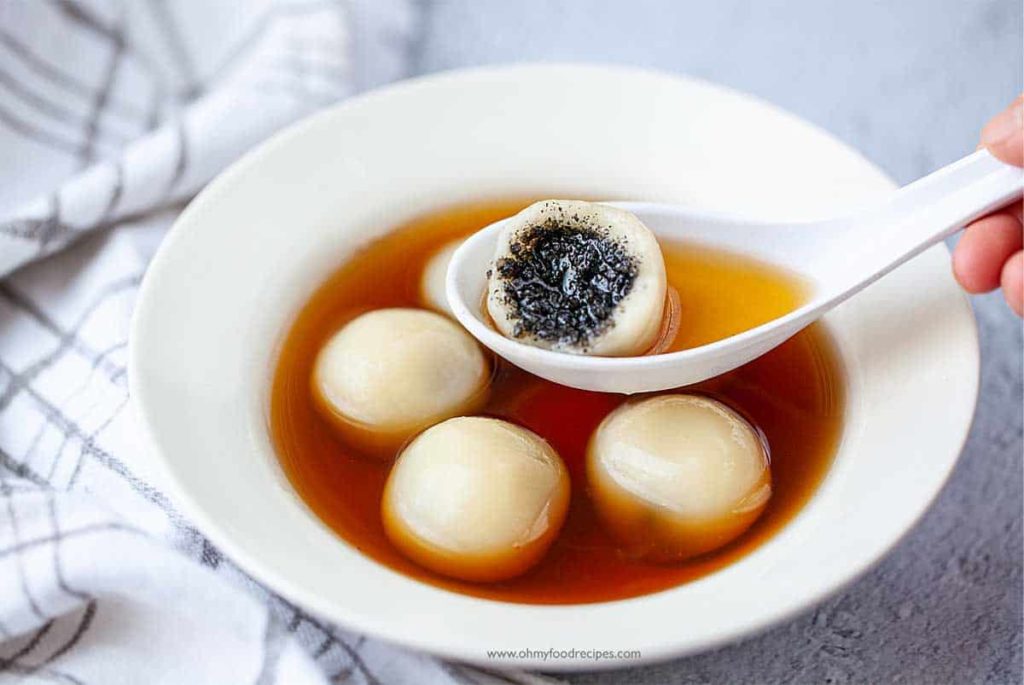
These are sweet rice dumplings. Traditionally they are stuffed with a variety of delicious fillings such as sweet bean paste, sesame seed paste, and sugar, nuts, or fruit, and they are eaten at Chinese New Year (16 February). They’re boiled and then served in syrup which is now and then flavored with ginger. They’re also served at Chinese weddings, winter solstice, and other celebration days. They are seen as auspicious because the word ‘tang yuan’ is a homophone for ‘union’, so they symbolize togetherness and family.
Kuku sabzi in Iran
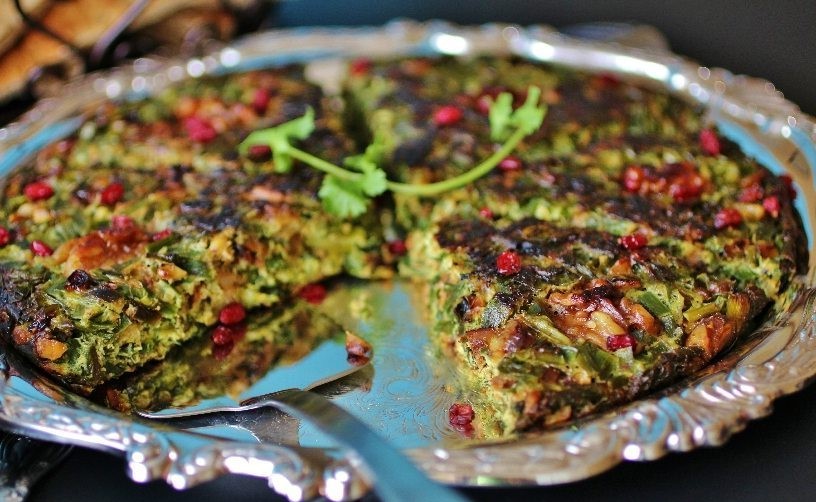
This is a kind of Persian frittata made with eggs and fresh herbs. Its green color, this fragrant and appetizing dish is traditional at Nowruz, the Persian celebration of New Year which happens at the stroke of the spring equinox. Kuku sabzi promises abundance and fertility for the year ahead.
Beans in Argentina

On New Year’s Day, Argentineans eat beans. They are following the belief that eating beans will help them keep their current job or find a better job in the new year. The multiple of beans will bring the prosperity of the current situation, or multiply the blessings into the new coming one.
Succulent Pig in Austria

For good luck, Austrians serve roasted suckling pig on New Year’s Eve — which they call “Sylvesterabend”. They decorate their dinner tables with little marzipan pigs ) just like Germany). Pigs represent progress and prosperity in Austria as well as in other cultures, including Cuba, Hungary, and Portugal, where they also serve pigs on New Year’s Eve. To drink, Austrians sip on a red wine punch, mixed with cinnamon, sugar, and other spices, and give a toast to Saint Sylvester.
12 dishes in Estonia
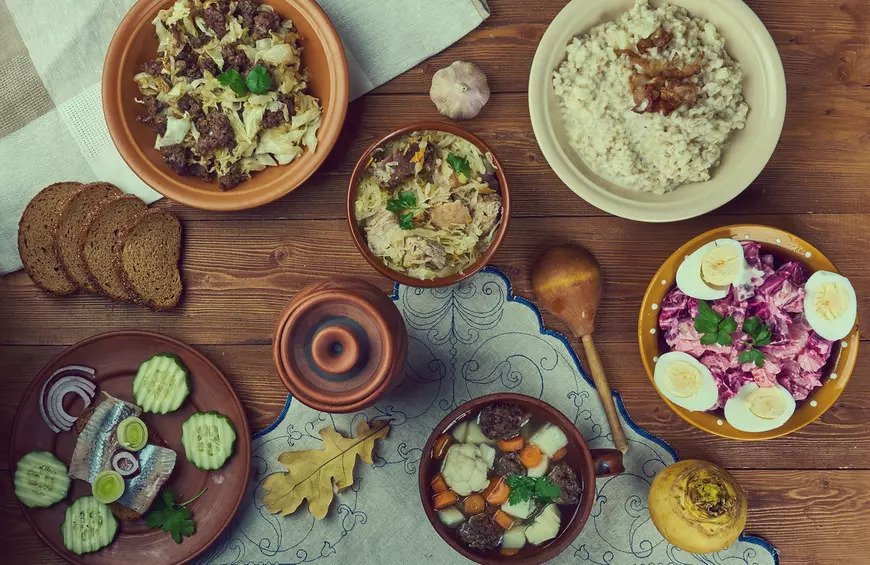
Some Estonians eat seven, nine, or 12 meals on New Year’s Eve, believing that with each meal eaten, they will earn the strength of that many men in the new year. Part of each meal, however, is left unfinished. It is a sacrificial meal for the spirits of ancestors who visit the house on New Year’s Eve.
Turkey and oysters in France
As with everything French, the New Year celebration is posh and fancy. New Year’s Eve in France—known as “Le Réveillon de la Saint Sylvestre or Le Réveillon du Nouvel An”—often includes oysters and foie gras. French New Year’s is celebrated with a traditional meal of goose or turkey, oysters, foie gras, and champagne.
Jelly doughnuts in Germany

Once the clock strikes midnight and fireworks have been set off on New Year’s, Germans enjoy a traditional treat of jam-filled, and sometimes, liquor-filled, donuts called “Pfannkuchens” in Berlin and “Berliners” everywhere else in Germany. Sometimes, a donut may contain a practical joke, such as mustard instead of jam, which is considered by some to be bad luck. Like Austrians, Germans also dine on marzipan pigs for good luck on New Year’s Eve — which they call Sylvesterabend, meaning the eve of Saint Sylvester. A traditional drink consumed on New Year’s Eve is “feuerzangenbowle”. To make the drink, warm mulled wine is mixed with cinnamon, cloves, and orange peel. A large, cone-shaped piece of sugar is soaked in rum, placed in a holder above the wine, and set on fire. Then, the sugar caramelizes and melts into the mulled wine. However, toasts at midnight are not given with this traditional drink, but instead with champagne.
Lamb in Greece

Symbolizing birth and re-growth in the new year, in Greece an onion is hung on the front door on New Year’s Day alongside a pomegranate (which is hung on Christmas). Later in the evening, a meal of roast lamb or pork is eaten, and an extra place is set at the table for Aghios Vassilis or Santa Claus.
Soba noodles in Japan
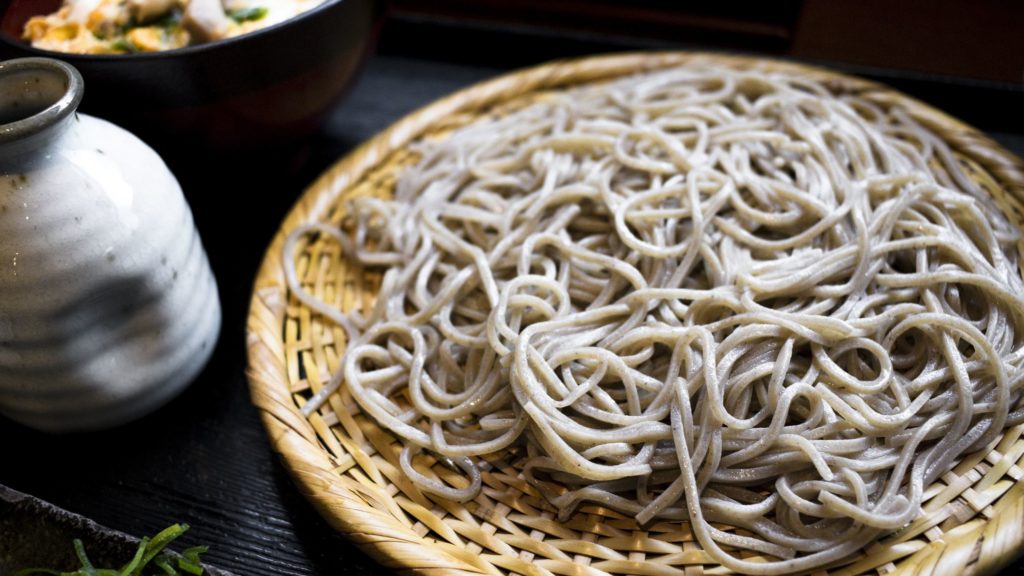
Just before the clock strikes midnight, people in Japan begin the new year with a bowl of buckwheat noodles called “Toshi Koshi soba”, which are known as “year-crossing noodles”. Other traditional foods are eaten on New Year’s include kuromame (sweet black beans), kazunoko (herring roe), kobumaki (rolled kelp), rice cakes, and shrimp.
Oliebollen in Netherlands
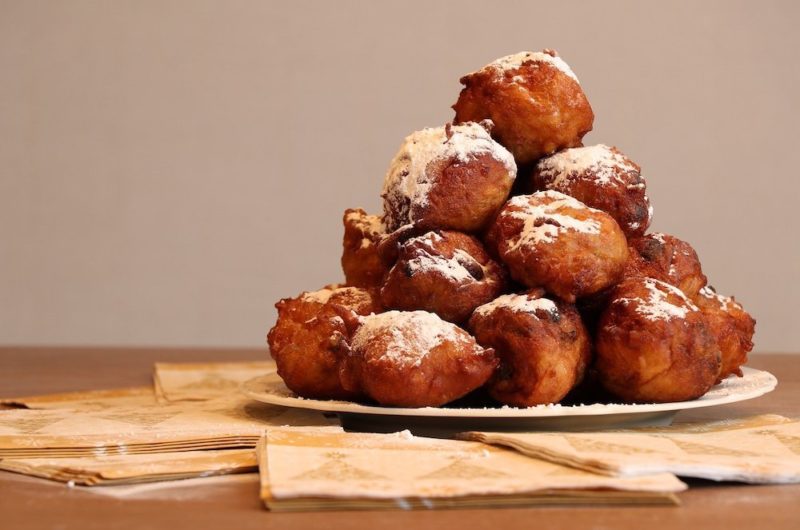
People in the Netherlands ring in the new year — or what they call Oud en Nieuw, meaning “Old and New”— with sweets. Oliebollen, which are fried donut-like pastries that are filled with apples, currants, and raisins and sprinkled with powdered sugar, is served along with apple beignets, apple turnovers, and champagne.
Pickle herring in Poland
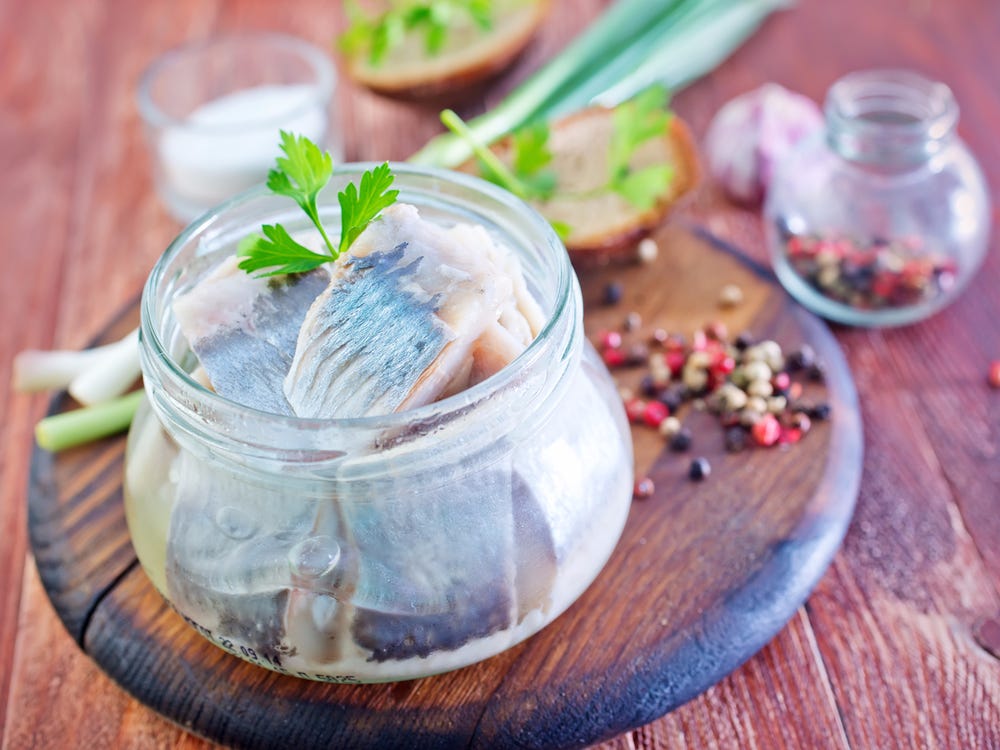
At the stroke of midnight, Polish people dine on pickled herring (which is plentiful in all Scandinavian countries), believing it will bring a year of prosperity and bounty. Its silvery shiny skin has a lot to do with money and prosperity. Herring is often eaten with midnight with an assortment of other smoked and pickled fish, pâté, and meatballs. It’s thought that this food will make for a prosperous and plentiful new year.
Raisins in Portugal
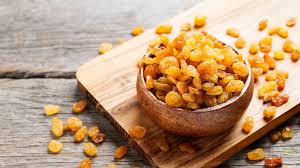
It’s customary to eat 12 raisins – one by one – at midnight. One raisin at each stroke of the clock, representing the months to come. Doing this will bring you luck. Originally, the tradition was to eat 12 grapes, but raisins are much easier to eat in the short amount of time it takes for the clock to strike 12 times
Risgrynsgröt in Sweden
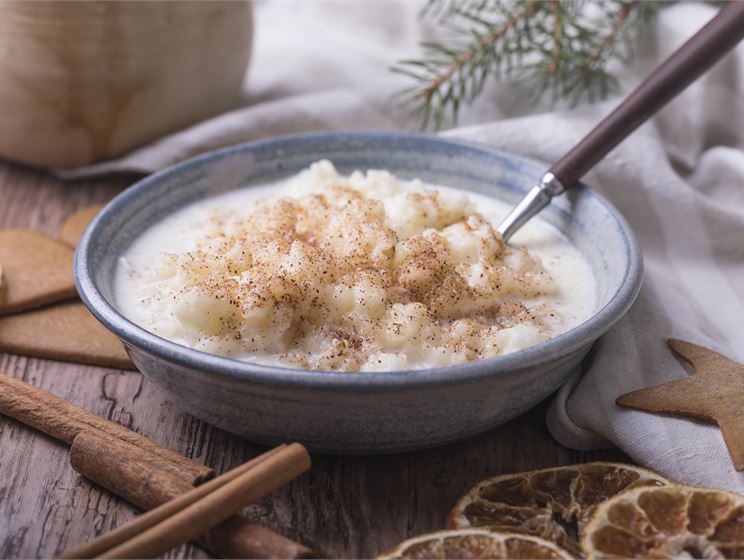
On New Year’s Eve, Swedes serve rice pudding is a must-served dish. There is an almond hidden within the dish. It’s believed that whoever finds the almond will receive 12 months of luck and happiness.
The tray of Togetherness in China
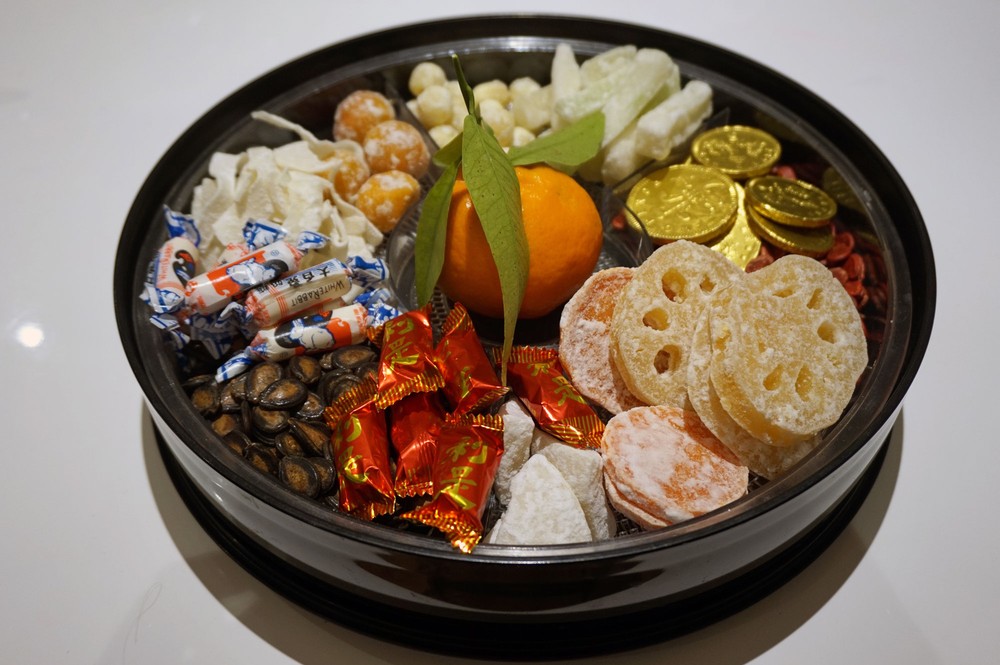
The Tray of Togetherness is a platter of sweets families traditionally use to welcome visiting guests around the Lunar New Year. Each tray or box usually has six or eight compartments (the number six symbolizing luck, and eight, fortune) filled with symbolic edible items. The tray, usually round or octagonal, holds the separate compartments snugly, and the food within symbolizes all the luck, happiness, and good fortune wished upon family and friends for the upcoming New Year. Traditionally you will find in it: Red Watermelon Seeds, Lucky Red Candy & Sweets, Gold Chocolate Coins, Pistachios & Cashews, Candied Winter Melon, Candied Lotus Root, Candied Coconut, Dried Kumquats.
Hoppin’ John in American South
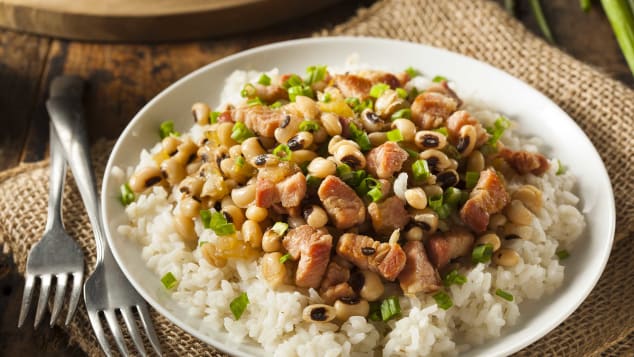
A major New Year’s food tradition in the American South, Hoppin’ John is a dish of pork-flavored field peas or black-eyed peas (symbolizing coins) and rice, frequently served with collards or other cooked greens (as they’re the color of money) and cornbread (the color of gold). The dish is said to bring good luck in the new year.
Tamales in Mexico
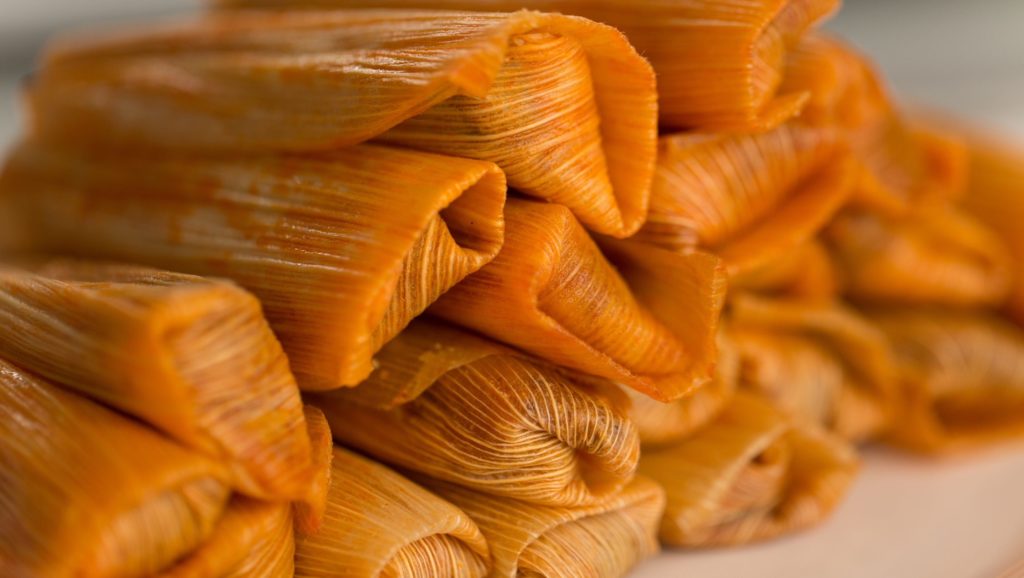
Tamales are basically corn dough stuffed with meat, cheese, and other delicious additions and wrapped in a banana leaf or a corn husk. They are making appearances at pretty much every special occasion in Mexico. But the holiday season is an especially favored time for the food.
Roasted pig in Cuba
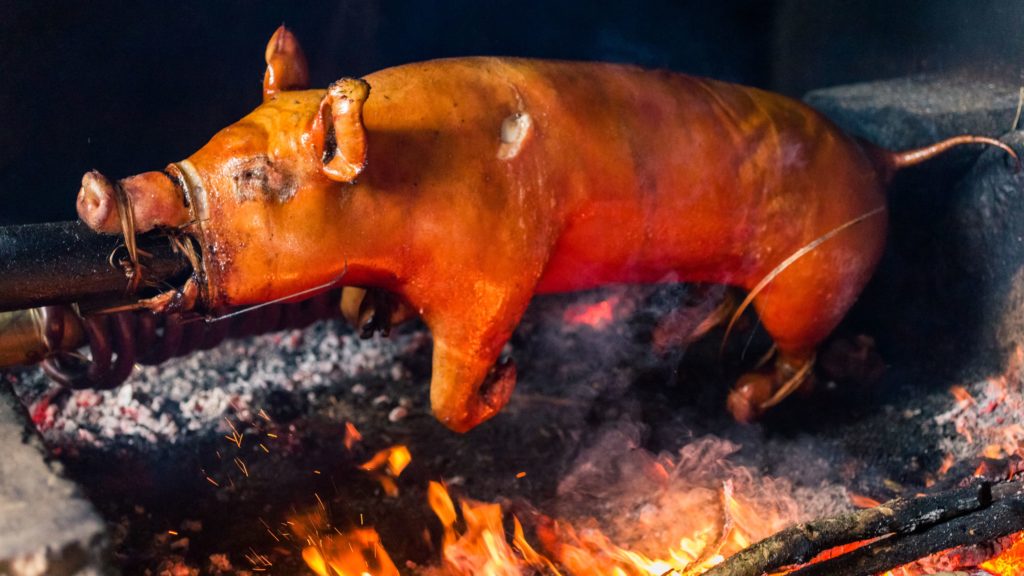
In Cuba, suckling pig is traditionally served on New Year’s Day, as pigs have long been a symbol of good luck. Just like in Austria and Germany the pig is a symbol of coming riches and prosperity in the new coming year.
Vasilopita in Greece
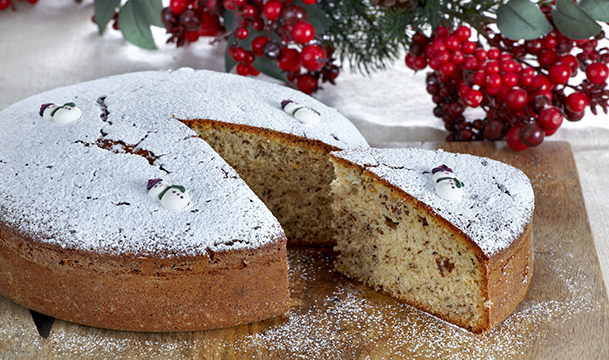
A round coffee cake that’s usually made with almonds. Vasilopita is a round cake traditionally baked with a coin (or another trinket of some sort) hidden inside of it. The coin is believed to bring good luck to the person who finds it. Vasilopita cake, full of warming spices, is typically baked on Jan. 1 in Greece.
Rice and lentils in India
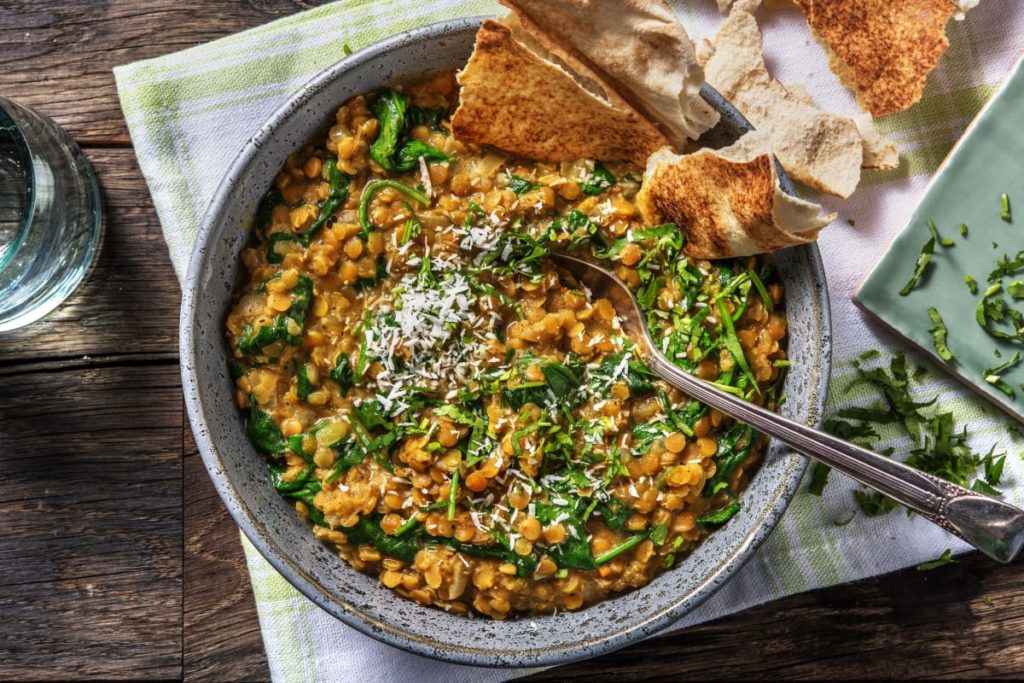
In India, NYE is celebrated in the spring with rice and lentils. Again, the lentils’ coin-like shape represent future prosperity
Pelmeni in Russia
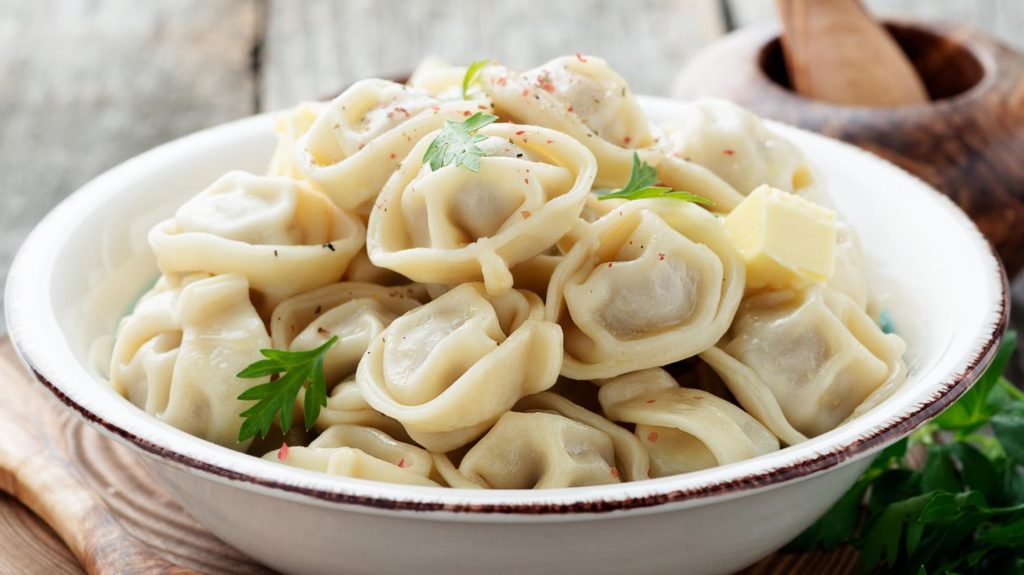
On New Year’s Eve in Russia, children get a visit from Father Frost, who brings gifts while they sleep (no reindeer come with this bearded gift-giver, but Father Frost’s granddaughter, Snegourochka is there to assist.) The real presents, though, are the eats: pelmeni with sour cream, pickled herring, mayo-slicked Olivier salad of boiled potatoes and eggs, and course caviar and course plenty of vodka.
Kransekage in Denmark and Norway
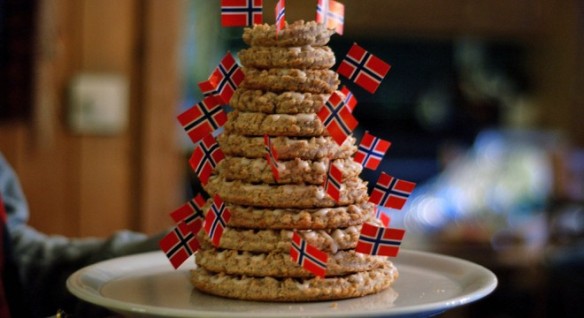
Kransekage literally means a wreath cake. It is a cake tower created of many circular rings of cake layered atop one another, and they are made for New Year’s Eve and other special occasions in Denmark and Norway. The cake is made using marzipan, often with a bottle of wine or Aquavit in the center, and can be decorated with ornaments, flags, and crackers.
Grapes and lentils in Chile

Chileans also participate in the Spanish grape-eating and Italian lentil-eating traditions. N]both of them are round and coin-like shaped, which will secure richness and prosperity for the upcoming year. In Talca, Chile, locals have developed a newer New Year’s Eve practice of visiting departed loved ones at a cemetery after midnight mass, where they listen to music and light candles in remembrance.
Dumplings in China
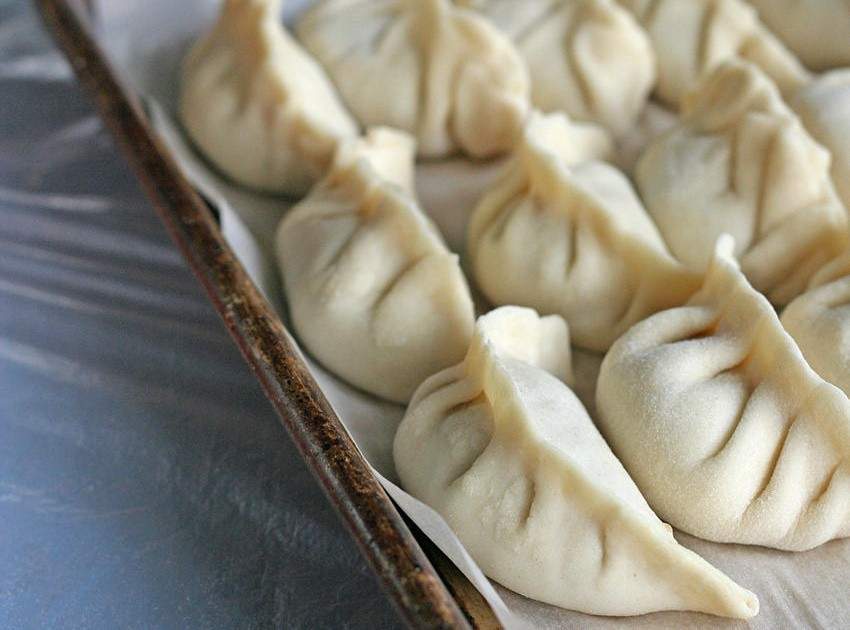
Jiaozi – The dumplings eaten for the Chinese New Year. They are especially famous at the end of January — are known as jiaozi in Mandarin and are regarded as a symbol of wealth and longevity. It’s common to shape the jiaozi in small circles, meant to resemble the shape of ingots, early Chinese money.
New year bread in Armenia
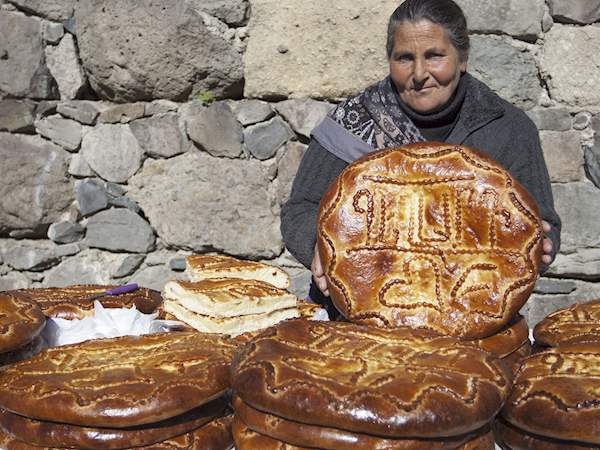
Nothing says “good luck in the new year” like bread, according to some Armenian families, who bake a large, flat loaf known as “tarehats, darin, or gata”. A coin or a single walnut is baked inside the bread, and whichever member of the family finds the prize trinket in their piece is expected to have the best luck that year.
Bread with butter in Ireland
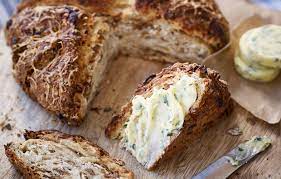
Some historians say that the Irish used to leave buttered bread on their doorsteps on New Year’s Eve, which local children would then come and pick up. well, what can be better than freshly made bread and butter?
Sweet noodles in Persia
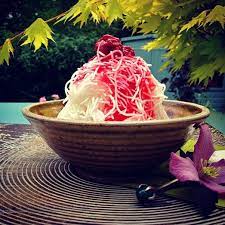
Faloodeh, a dessert made with vermicelli noodles and sugary syrup. It is made for multiple special occasions in Persia, one of them being Nowruz, the Persian New Year
Meat pie in Canada
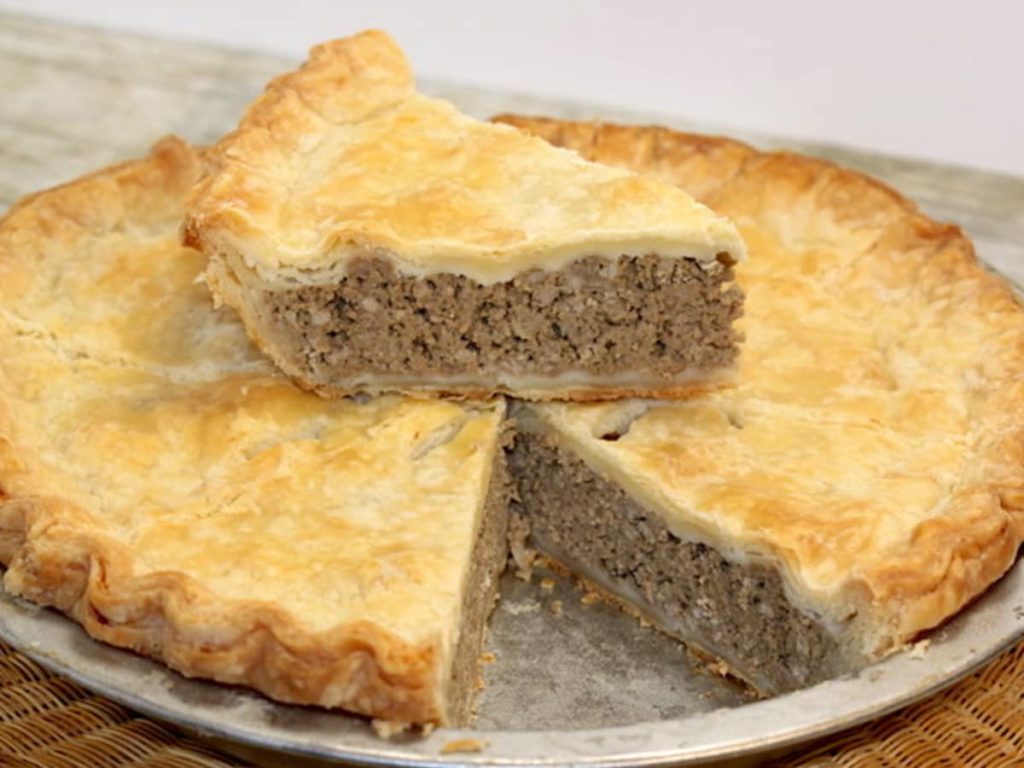
Tourtiere. This French-Canadian meat pie originated in Québec and is typically served on Christmas or New Year’s. It’s truly a particular occasion dish as it combines both sweet and savory flavors like beef, pork, potatoes, onions, allspice, and a buttery, flaky crust. You’ll find numerous variations of the dish throughout Quebec.
Hot drink in England
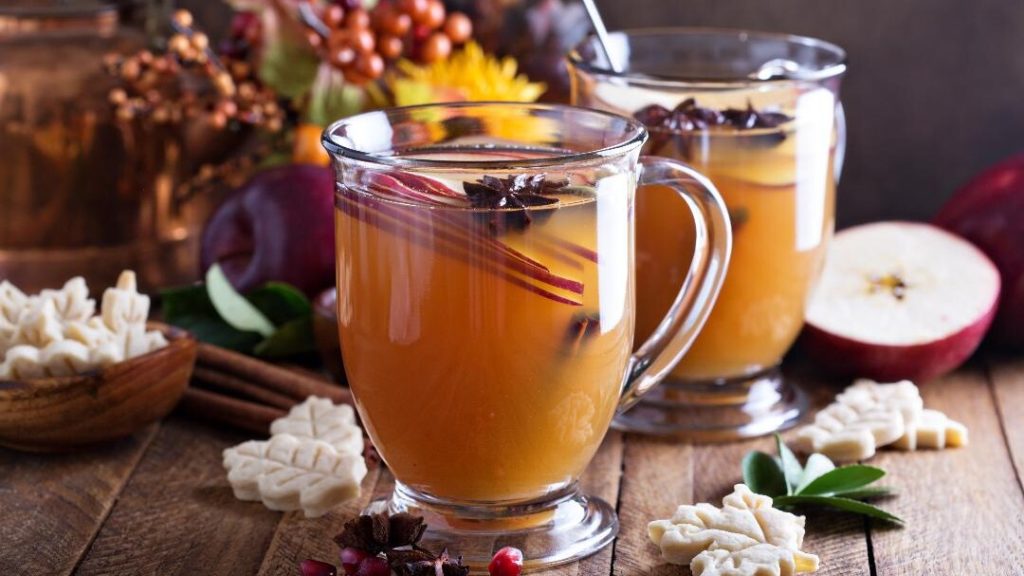
This seasonal drink is enjoyed on New Year’s in some parts of England because of its name. Wassail is derived from the Gaelic term for “good health” or “be well”. It’s typically made with hot cider and a combination of spices. Traditional wassail was made with hard liquor, apples, brandy, and other spices. This recipe is made with cloves, apples, cinnamon, lemon, orange, ginger, and nutmeg and is a nonalcoholic wassail recipe. You could certainly add alcohol if you wish!
Apples in Wales
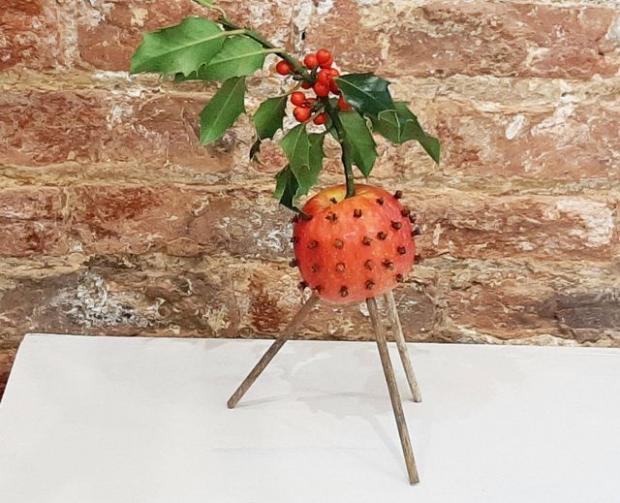
In Wales, there’s an ancient New Year’s traditional food called the Calennig. “Calennig” means “New Year’s celebration,” but it typically refers to one specific treat: skewered apples covered with diced fruit, fragrant herbs, nuts, and oats, or raisins. Traditionally, the Calennig was braced up on three wooden legs to make a unique centerpiece that doubled as a sweet snack. According to Welsh tradition and lore, the shape represents the sun, which is gone in winter. It’s also important to finish your Callenig before noon on New Year’s Day if you don’t want to be called a fool.
Banitsa in Bulgaria
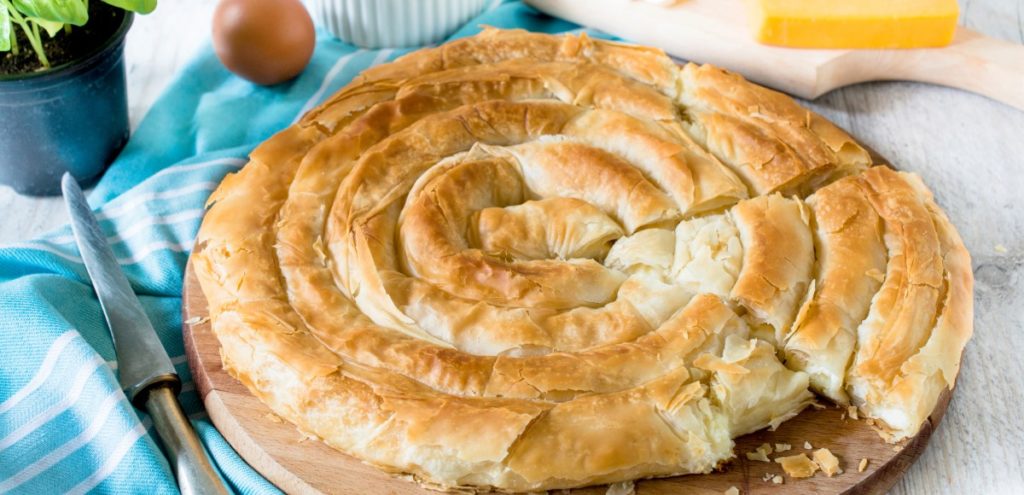
Come New Year’s Eve, you’ll likely find a lot of food on a Bulgarian table. There’s often a big, festive holiday dinner with hearty centerpiece dishes like pork with cabbage or roasted turkey. But one of the most widespread culinary traditions for the holiday is Banitsa, a kind of Borek (cheese-stuffed pastry) that is typically made only on Christmas and New Year’s Eve. Egg and cheese are rolled in phyllo dough, wrapped into a tight circle, and baked. For the New Year, there’s an extra special touch: charms, symbolic objects (like a small dogwood branch with a bud for health), coins, and written wishes wrapped tightly in aluminum foil are hidden in the Banitsa so that having a piece (sometimes determined by spinning the Banitsa on the table) is like getting your fortune told.
Gozinaki in Georgia
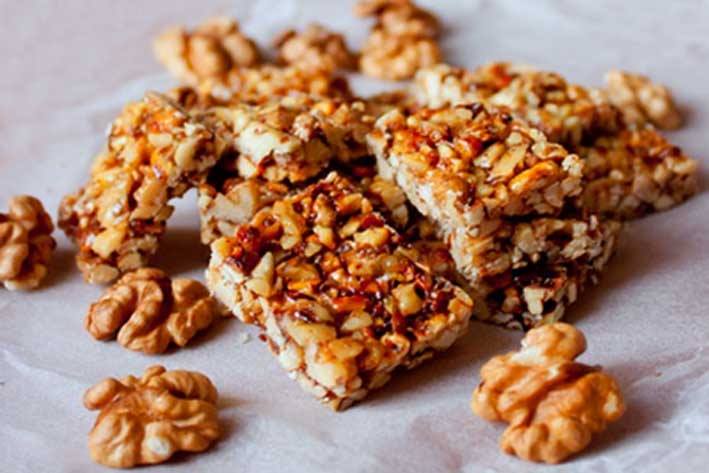
For a sweet start to the New Year, residents of Georgia (I mean the country, not the U.S. state), make and eat Gozinaki (caramelized walnuts that have been cooked in honey). These treats —which are a cross between nougat and a nut brittle —are served only on New Year’s Eve and Christmas. Gozinaki is traditionally cut into diamond shapes and eaten at midnight.
Lentils in Nigeria
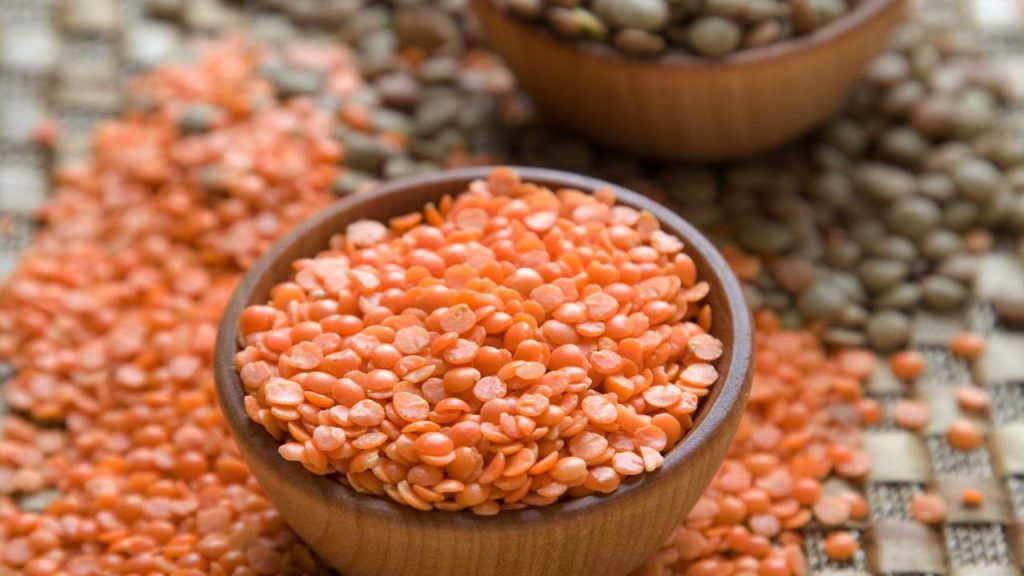
Thanks to their resemblance to coins, lentils are commonly associated with prosperity and are therefore a popular food to consume on New Year’s Eve in several countries including Nigeria. Seafood stew is also popular. Whatever you do though, don’t eat any poultry on New Year’s Eve in Nigeria, where superstition says that doing so will leave you poor in the New Year.

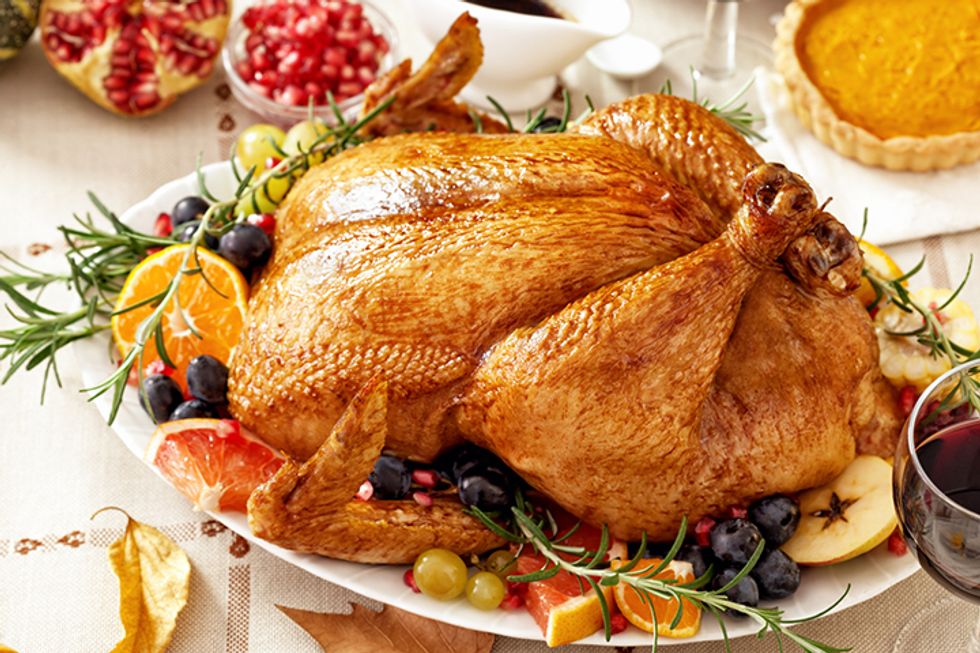
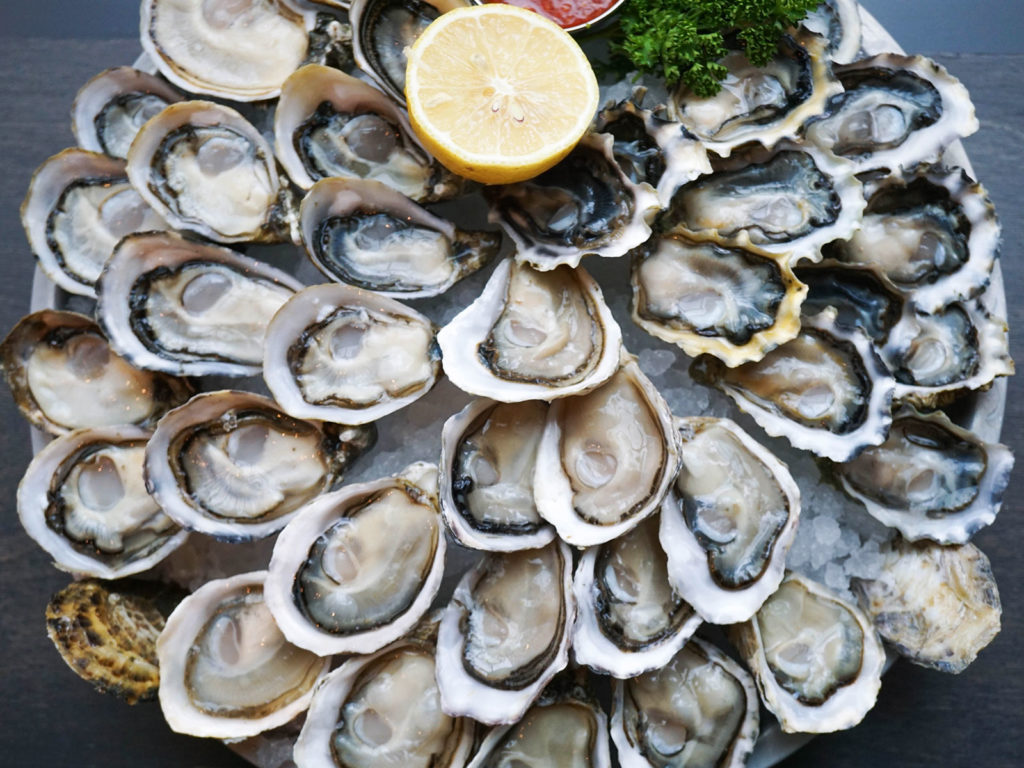



Great post 👍